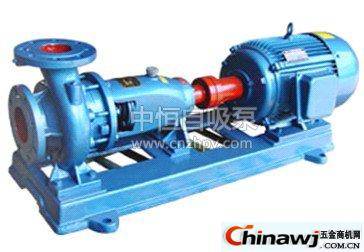Preparation before piping pump assembly
ZHITONG PIPE VALVE TECHNOLOGY CO.,LTD , https://www.ztongvalve.com
Preparations for the assembly of the pipeline pump must be prepared. Preparations include the following items: 1. The assembler must be familiar with the structure of the pump, understand the assembly sequence and assembly method; 2. Prepare the tools, gauges, etc. required for assembly; 3. Clean all parts and wear parts as required. Good; 4, pre-assembly inspection of the parts.
For pipeline pumps, the rotor part (including the impeller, impeller retainer or impeller hub and balance disc, etc.) should be assembled in advance, also known as the small or trial mounting of the rotor to check the concentricity of the rotor (also known as sloshing ≤ 0.05 mm), the skewness and the distance between the impeller outlets. The impeller, impeller retaining sleeve and balance disc are mounted on the calibrated pump shaft, locked by the sleeve, mounted on the top of the lathe or supported on a V-shaped iron (or bearing). The method of checking the concentricity of the rotor of the pipeline pump is as follows:
(1) The pipe pump divides the circumference of the rotor into eight equal parts (the impeller can also be divided by the number of blades) and marks it. Place the dial indicator on the outer circle of the impeller and the outer circle of the impeller, the outer circle of the impeller sleeve, the outer circumference of the sleeve and the outer circle of the balance disc. Slowly rotate the rotor and record the reading of the dial gauge once every aliquot. After one revolution of the rotor, the dial gauge on each measurement point will get eight readings and record these readings.
(2) The maximum reading at each measurement point minus the minimum reading is the eccentricity of the rotor.
The purpose of measuring the rotor eccentricity is to check the concentricity of the components with the pump shaft of the pipeline pump. If the eccentricity exceeds the allowable value, it can be turned by a lathe to meet the requirements.
(3) Inspection method of rotor skewness.
The rotor deflection mainly checks the end face of the impeller and the friction surface of the balance disc and the balance ring. After the pump shaft is leveled, the end surface of the impeller mouth and the friction surface of the balance disc should be a vertical plane perpendicular to the pump axis. If the vertical plane is deflected, it will be seriously worn during operation and even affect the work of the balance disc. When checking the skewness, use the dial gauge level on the side of the impeller and balance disc. Turn the impeller and balance disc, the maximum reading of the dial gauge minus the minimum reading, which is the skewness. Turning correction can be used when the skewness exceeds the specified value.
(4) Measurement and adjustment of the spacing of the pipeline pump.
Pipe pump content: a, adjacent impeller exit spacing; b, the total distance between the first stage impeller and the final stage impeller; c, the inlet spacing of adjacent vanes; d, the total inlet spacing of the first and last stage vanes.
More knowledge: pipeline pump http://stainless steel butterfly Valve http: hard seal ball valve http://pneumatic adjustment valve http://pneumatic butterfly valve http:// 